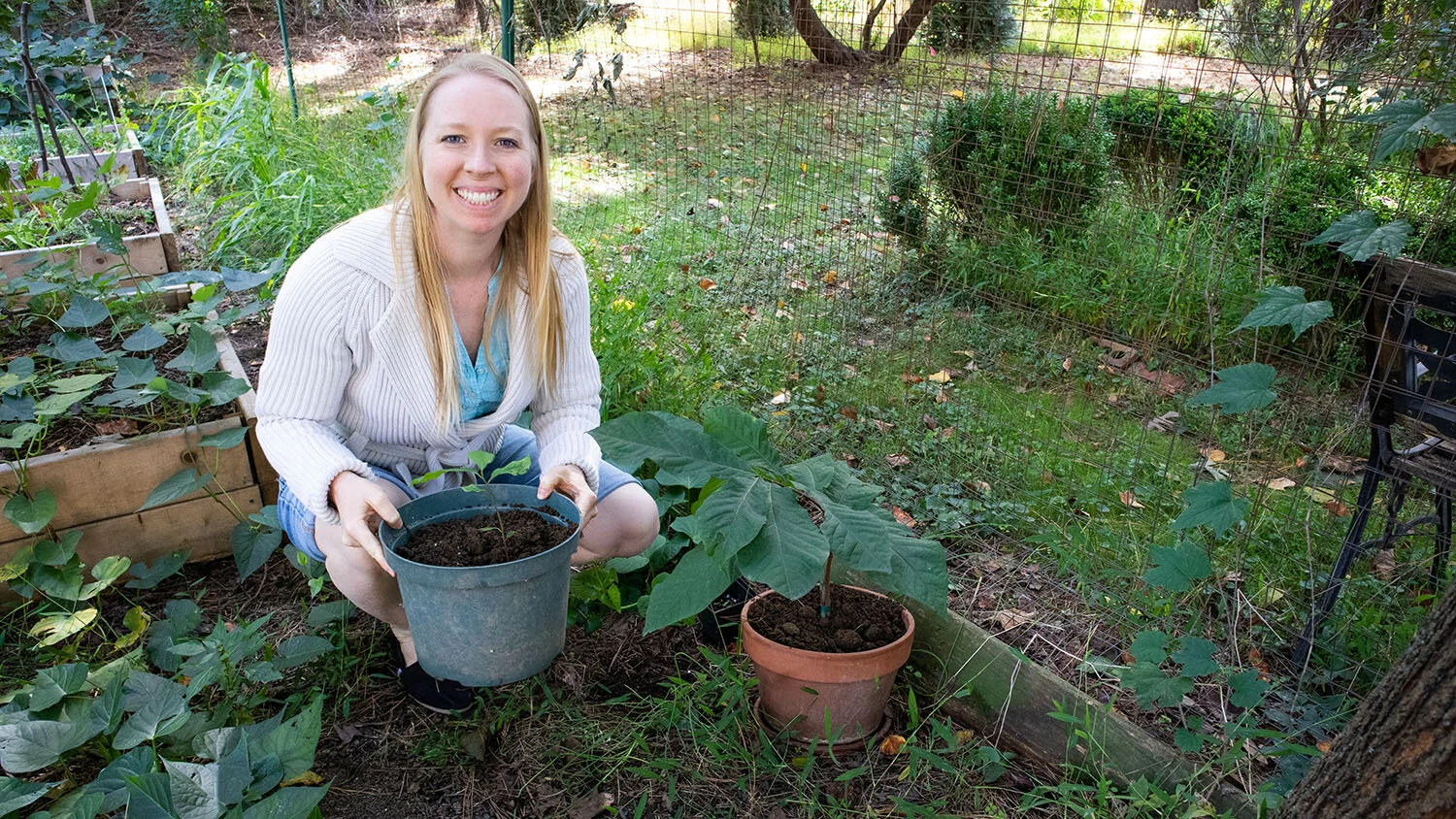Homegrown Sweet Potatoes
Disclaimer: This post contains affiliate links through which we earn commission.
Sweet potatoes are one of my favorite foods. I eat them almost daily, preparing them in a variety of ways. I first saw a gardener growing them in South Africa in 2016. I was impressed with what a massive, and attractive plant it can be! Over the last few years, I have been experimenting with growing them in my own garden. It took a few years of trial and error, but I think I have finally figured out a system that works well. Now I'm excited to share my process with you!
In late winter, you may notice growth beginning to occur in the potatoes and sweet potatoes sitting in your pantry. These vegetables, also known as tubers, have "eyes" that sprout when spring is on the way. It can be a little irritating for a cook. But for a gardener, it can be an exciting indicator that it's time to start prepping the garden for a new season of growing! Potatoes are one of the easiest and most enjoyable plants to have in the garden. You can order small tubers to plant, or you can use store-bought organic potatoes. Here’s my blog post with more info about growing potatoes.
This is the first sweet potato plant I ever saw, at the home of a gardener living in the outskirts of Johannesburg, South Africa, in 2016. The plants can grow quite large, if left untrimmed. However, the leaves are actually edible, so trimming the plant back can result in some tasty greens on the dinner table!
Sweet potatoes can be a little more complicated to grow. I've found that potatoes sprout almost too easily after coming home from the store. In contrast, sweet potatoes can take their time sprouting growth. While a potato is planted in the dirt as a whole or cut up tuber, sweet potatoes will grow "slips" that can be cut off from the original sweet potato and planted in the dirt. In the past, I have purchased slips from the Southern Exposure Seed Exchange. Keep in mind that these only ship around mid-May and they often arrive looking half dead, but generally do bounce back to grow into healthy plants. If you want to grow slips from a store-bought sweet potato, make sure that it is organically produced, from a trusted source. Last year, I managed to grow my own slips. However, I took way too much time getting them into the ground, and as a result, they didn't have enough time to mature, resulting in only 2 small sweet potatoes from just one of a dozen plants. This year, I'm starting early!
The sweet potato plant will shoot off vines that will root in various locations around the plant. Gently pull up these roots, to maximize the growth of the sweet potatoes at the base of the plant.
How to grow sweet potatoes:
You’ll need:
1 sweet potato
3 toothpicks
2 glass containers, such as drinking glasses or mason jars, sized at 4-8 oz (120 - 240 mL)
water
7 gallon (26.5 Liter) pot / container
7 gallon (26.5 Liter) organic potting soil
small knife, scissors or pruning shears
Instructions:
Cut a sweet potato in half. The remaining sweet potato can be used for cooking or you can double the instructions and grow both halves of the sweet potato in two glass containers.
Insert 3 or more toothpicks into the sweet potato, evenly spaced. The number of toothpicks will depend on the size / thickness of the sweet potato.
Balance the sweet potato / toothpicks over a glass container, such as a drinking glass.
Pour water into the glass container, filling just to the bottom edge of the sweet potato. (I've found that submerging the sweet potato more than a quarter inch (0.6 cm) can result in a moldy tuber.)
Place the glass container with sweet potato near a window that gets a lot of light during the day. Change out the water every other day. Wait for growth.
If / when sprouts and roots begin to appear, allow the slips to grow about 6 inches (0.6 cm) in height.
When the slip has reached 6 inches (15.24 cm), cut it 1/4 inch (0.6 cm) away from the sweet potato, and place it into a new glass container, submerged in about 1/4 inch (0.6 cm) of water.
Prepare your garden bed or container for your sweet potato slips. The plant will fan out, so be sure to leave plenty of space for growth.
Wait a week or two for the slip to develop roots and then plant it at the top of a large mound of dirt in the garden. Or if using a large container, fill it halfway with dirt and plant the slip in the dirt. Add more dirt as the plant grows, to ensure that the growing sweet potatoes are covered.
The slip will eventually grow into a larger plant, sending out vines. Depending on how much space you have in the garden, you can either allow these to grow, or cut them off and use the edible leaves in recipes, like you would spinach. Either way, make sure that you pull up the rooting vines from the ground, so as to allow the maximum amount of plant energy to go toward growing large tubers at the original point where the slip is planted.
I think sweet potato plants make for an excellent gift idea, which is virtually free to produce, aside from the low costs of the original sweet potato, the dirt and the pot. If the recipient of this gift does not have a yard, the sweet potato can be kept as a house plant.
Dig for your sweet potatoes in late summer or early fall, before the first frost, and enjoy your own homegrown bounty!
Check out our video about growing sweet potatoes here! And tell us! Do you love sweet potato as much as we do?
- Christin










